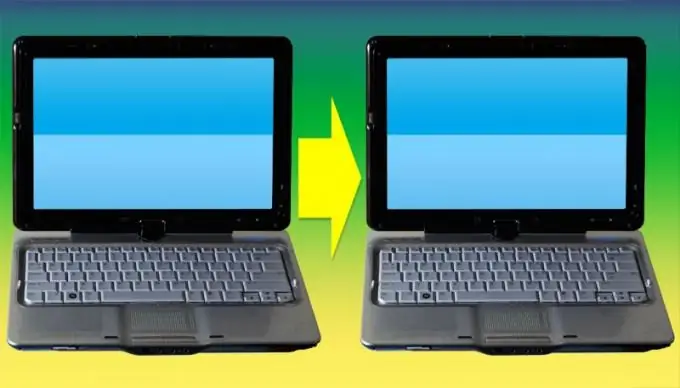If the transfer of information from one computer to another must be carried out regularly, the most correct solution would be to combine them into a local network. If the distance between them does not allow doing this, you can organize a permanent channel in the global network - the Internet. However, more often the user of personal computers is faced with the need for not regular, but one-time or very rare transfer of a large amount of information from one computer to another.

Instructions
Step 1
Use any of the removable media available at hand - computers today can handle a large number of such media. If the total volume of files that you want to transfer does not exceed 1.4 megabytes, then you can use a floppy disk. The procedure for writing and reading from it is simple - insert the floppy disk into the drive, and when you hear the click of the latch open the standard file manager of the operating system installed in the computer and use the device named "Drive A:" just like any regular computer disk - write or read from its files. The disadvantage of this method of transferring data lies in the relatively small capacity of the floppy disk, and also in the fact that today not all computers are equipped with floppy drives.
Step 2
For transferring a larger amount of information (up to 750 MB), CD-disks are intended. Using them is similar to using floppy disks, but has significant features. In addition to the fact that both computers must have CD drives installed, one of them must have a recording function (the one from which the information is transferred). In addition, there are certain requirements for the disks themselves - not all of them can be re-recorded information. Operating systems of the latest versions (for example, Windows 7) are able to write files to optical media by their own means, but if the computer from which you want to copy the files is running earlier versions of the OS, then additional software will need to be installed on it. To transfer information using a CD, make sure that the source computer is equipped with a burner and has the latest OS or separate CD writing software, and that the second computer also has a CD reader. Prepare a blank disc for recording and use the appropriate program to copy the files you need, and then read them on a second computer.
Step 3
All conditions for transferring information using DVDs coincide with the requirements for CD-media described above, with the exception of the amount of data that can fit on removable media of this type - it is significantly larger. Single layer DVDs can hold up to 4.5 gigabytes, and dual layer discs up to 9 GB.
Step 4
If you have the opportunity to use flash media, give preference to this type - working with them is much easier than with optical discs. In addition to the presence of the "flash drive" of sufficient capacity, a mandatory requirement for both computers is only the availability of USB ports. Just insert this medium into the appropriate slot and the device will appear in the OS file manager - write or read files from it in the same way as from any internal disk of the computer.
Step 5
Flash media can be replaced with, for example, a flash player or mobile phone, if their memory capacity is sufficient for the amount of information that needs to be transferred. The use of these devices, as a rule, differs little from a flash drive, but some phones and players may require the installation of a special software module in both computers.
Step 6
If both computers are connected to the Internet, you have the option to transfer files over the WAN. Too large files can be packed into a multivolume (consisting of several files) archive and sent from one computer to another using e-mail. You can also use public file sharing servers - by uploading a file to it using a special form on the website, you will receive a network address from which you can download this file to another computer (or several other computers).






